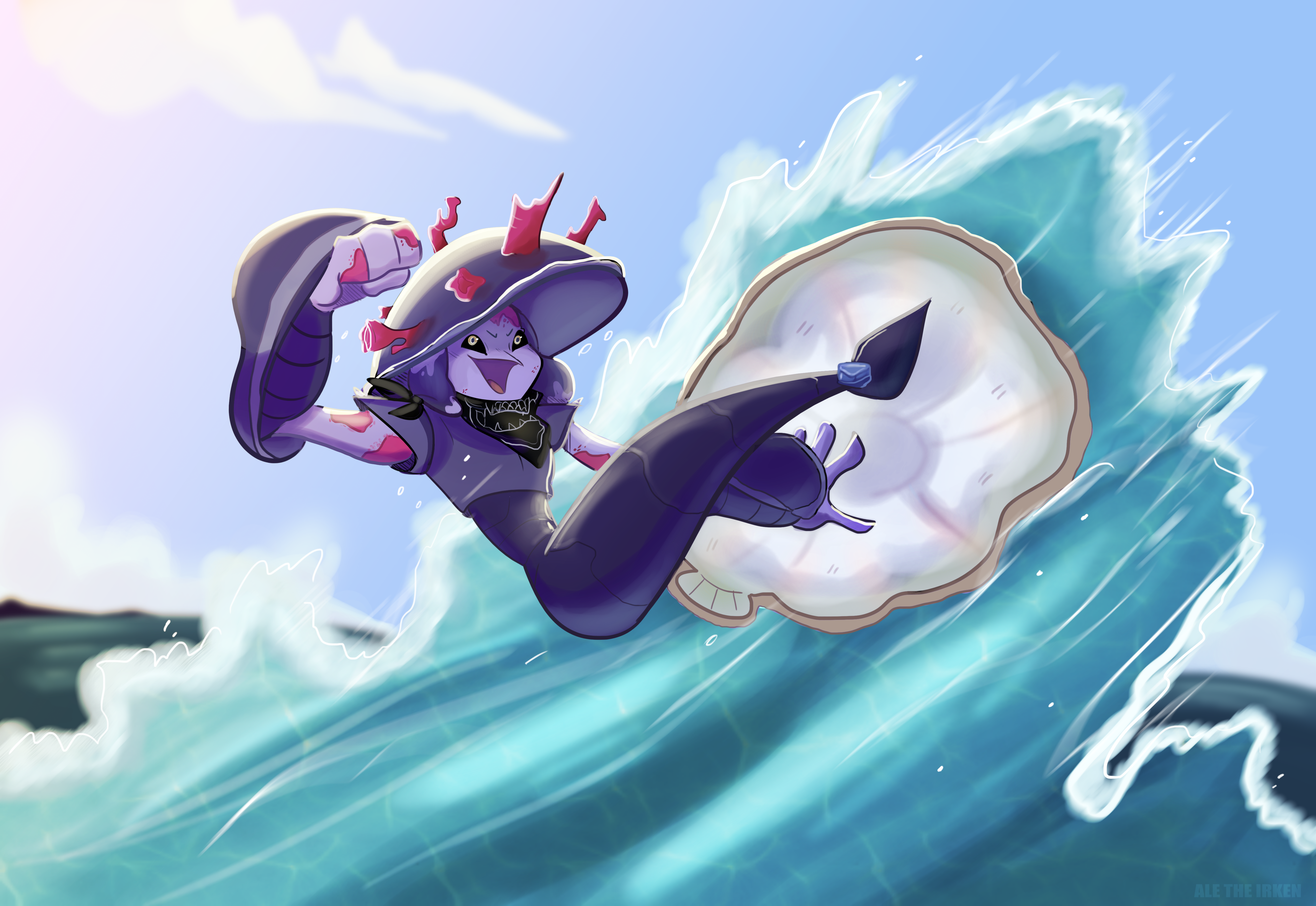Shell Wavecrashing
I have seen the Pelagos try and ride the river down on their shell today. Their creativity always surprises me. Good thing they don't have a weak neck, cause these daredevils would break it at the speed they sometimes reach.
History
The origin of the Shell Wavecrashing sport is a summer activity created when the Pelagos came on land. Since most of them already had muscular strength by doing the river reverse current swim to reach the settlement on Man'gaihi Island, most of the assignated guards desired to improve their balance to be more prepared to this new world's challenges.
This ritual is separated in two versions:
- Traditional -> The first version
- Modern -> The present version
Execution
The goal is simply to reach the river's upstream and slide down the lagoon on a physical makeshift shell to navigate and "surf" down the river stream.
It is known to practice reflexes and sharp muscles flexion on the tail (or legs if a humanoid wanna try). In both version, touching on land is considered 'out of bounds' and disqualifies the surfer. Falling from your shell also disqualifies the surfer, the only exception being if the contact between surfer and shell than a couple of seconds, such as if they are gaining back control in the air.
In the traditional version, since the race is in group, contact is not forbidden. While there is no clear penalties for intentional hit, the near-totality of runners avoid to invest many momentum to check another runner as it can be more detrimental to the person initiating the contact, as the balance remains very hard to maintain on both sides. The big majority of contacts are shell-on-shell.
Components and tools
Traditional: The wavecrasher use it's own shell to navigate through the stream, which makes the participant bare-headed.
Modern: The participants keep their shell on the head and use wooden crafted shells to go down the stream. It makes for a more odd balance, but more natural since they wear it most of the day.
Participants
Traditional : Up to 4 at the same time, trying to reach the lagoon first.
Modern:: As many as desired by organisers, but participants go down one at a time. Volunteers are set along the river to signal the next wavecrasher to go, but also to provide assistance in case of an accident. The way to calculate the completion time is done with a rustic magic item : (article to create)
Observance
It is not uncommon to see a Pelagos practicing during hot weather, but events are usually done during summer as it is the best moments to ride the river.
During Aurora's Gathering , a once-in-a-year alternative of this run is made for the more daredevils of participants:
Haurangi's Mushroom Ride Gauntlet .
Primary Related Location



Comments